-
 The Impact of Hard Coal Mining on the Long-Term Spatio-Temporal Evolution of Land Subsidence in the Urban Area (Bielszowice, Poland)
The Impact of Hard Coal Mining on the Long-Term Spatio-Temporal Evolution of Land Subsidence in the Urban Area (Bielszowice, Poland) -
 Impact of Nature Conservation Resources of Agroecology: Insights from Hungarian Farmers and Consumer Perspectives
Impact of Nature Conservation Resources of Agroecology: Insights from Hungarian Farmers and Consumer Perspectives -
 Material Flow Analysis: An Analytical Tool for Strategic Planning Towards a Zero-Waste Solution for End-of-Life Ballast Flows on a Track and Ballast Renewal Site (French Conventional Line)
Material Flow Analysis: An Analytical Tool for Strategic Planning Towards a Zero-Waste Solution for End-of-Life Ballast Flows on a Track and Ballast Renewal Site (French Conventional Line)
Journal Description
Resources
Resources
is an international, peer-reviewed, open access journal on natural resources published monthly online by MDPI.
- Open Access— free for readers, with article processing charges (APC) paid by authors or their institutions.
- High Visibility: indexed within Scopus, ESCI (Web of Science), GeoRef, PubAg, AGRIS, RePEc, and other databases.
- Journal Rank: JCR - Q2 (Environmental Sciences) / CiteScore - Q1 (Nature and Landscape Conservation)
- Rapid Publication: manuscripts are peer-reviewed and a first decision is provided to authors approximately 26.1 days after submission; acceptance to publication is undertaken in 4.4 days (median values for papers published in this journal in the second half of 2024).
- Recognition of Reviewers: reviewers who provide timely, thorough peer-review reports receive vouchers entitling them to a discount on the APC of their next publication in any MDPI journal, in appreciation of the work done.
Impact Factor:
3.6 (2023);
5-Year Impact Factor:
3.7 (2023)
Latest Articles
Theoretical Substantiation of Risk Assessment Directions in the Development of Fields with Hard-to-Recover Hydrocarbon Reserves
Resources 2025, 14(4), 64; https://doi.org/10.3390/resources14040064 (registering DOI) - 11 Apr 2025
Abstract
This article presents a methodology for risk assessment and management in the development of hard-to-recover hydrocarbon reserves. The proposed methodology integrates Monte Carlo simulation and fuzzy logic methods, which allows for the consideration of both quantitative stochastic risks (e.g., fluctuations in oil prices,
[...] Read more.
This article presents a methodology for risk assessment and management in the development of hard-to-recover hydrocarbon reserves. The proposed methodology integrates Monte Carlo simulation and fuzzy logic methods, which allows for the consideration of both quantitative stochastic risks (e.g., fluctuations in oil prices, variability in costs, and production volumes) and qualitative uncertainties (e.g., environmental, social, and technological risks) that are traditionally difficult to formalize. The approach facilitates the incorporation of uncertainties associated with complex field developments and aims to improve managerial decisions through comprehensive risk assessment. The article elaborates on the theoretical aspects of the proposed methodology, including risk identification stages, the formalization of qualitative data using fuzzy logic, and the application of the Monte Carlo method for integrating various risk categories. The results confirm the potential of this methodology as a tool to enhance the resilience and economic efficiency of projects involving the development of hard-to-recover hydrocarbon reserves.
Full article
(This article belongs to the Special Issue Production Efficiency and Environmental Research for Responsible Mining)
►
Show Figures
Open AccessArticle
A Decision Support System for Managed Aquifer Recharge Through Non-Conventional Waters in the South of the Mediterranean
by
Rym Hadded, Mongi Ben Zaied, Fatma Elkmali, Giulio Castelli, Fethi Abdelli, Zouhaier Khabir, Khaled Ben Zaied, Elena Bresci and Mohamed Ouessar
Resources 2025, 14(4), 63; https://doi.org/10.3390/resources14040063 - 11 Apr 2025
Abstract
Water management in arid regions faces significant challenges due to limited water resources and increasing competition among sectors. Climate change (CC) exacerbates these issues, highlighting the need for advanced modeling tools to predict trends and guide sustainable resource management. This study employs Water
[...] Read more.
Water management in arid regions faces significant challenges due to limited water resources and increasing competition among sectors. Climate change (CC) exacerbates these issues, highlighting the need for advanced modeling tools to predict trends and guide sustainable resource management. This study employs Water Evaluation And Planning (WEAP) software to develop a Decision Support System (DSS) to evaluate the impact of climate change and water management strategies on the Triassic aquifer of “Sahel El Ababsa” in southeast Tunisia up to 2050. The reference scenario (SC0) assumes constant climatic and socio-economic conditions as of 2020. CC is modeled under RCP4.5 (SC1.0) and RCP8.5 (SC2.0). Additional scenarios include Seawater Desalination Plants (SDPs) (SC3.0 and SC4.0), water harvesting techniques (SC5.0) to highlight their impact on the recharge, and irrigation management strategies (SC6.0). All these scenarios were further developed under the “SC1.0” scenario to assess the impact of moderate CC. The initial aquifer storage is estimated at 100 Million cubic meters (Mm3). Under (SC0), storage would decrease by 76%, leaving only 23.7 Mm3 by 2050. CC scenarios (SC1.0, SC2.0) predict about a 98% reduction. The implementation of the Zarat SDP (SC3.0) would lead to a 45% improvement compared to reference conditions by the end of the simulation period, while its extension (SC4.0) would result in a 69.5% improvement. Under moderate CC, these improvements would be reduced, with SC3.1 showing a 59% decline and SC4.1 a 35% decline compared to the reference scenario. The WHT scenario (SC5.0) demonstrated a 104% improvement in Triassic aquifer storage by 2050 compared to the reference scenario. However, under CC (SC5.1), this improvement would be partially offset, leading to a 29% decline in aquifer storage. The scenario maintaining stable agricultural demand from the Triassic aquifer under CC (SC6.1) projected an 83% decrease in storage. Conversely, the total “Irrigation Cancellation” scenario (SC7.1) under CC showed a significant increase in aquifer storage, reaching 59.3 Mm3 by 2050—an improvement of 250% compared to the reference scenario. The study underscores the critical need for alternative water sources for irrigation and integrated management strategies to mitigate future water scarcity.
Full article
(This article belongs to the Topic Advances in Water and Soil Management Towards Climate Change Adaptation)
►▼
Show Figures
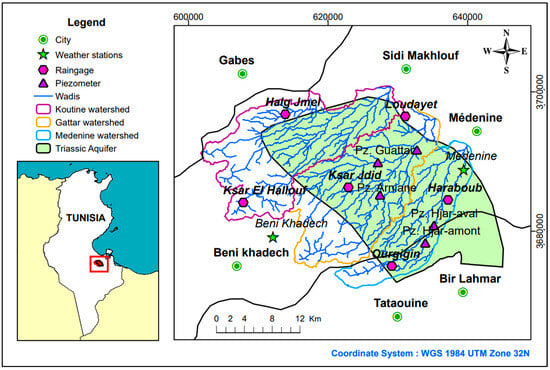
Figure 1
Open AccessArticle
Wastewater Treatment Plant Upgrade and Its Interlinkages with the Sustainable Development Goals
by
Laila A. Al-Khatib and Ahmad M. AlHanaktah
Resources 2025, 14(4), 62; https://doi.org/10.3390/resources14040062 - 8 Apr 2025
Abstract
In the face of acute water scarcity and sanitation challenges emblematic of arid and semi-arid regions (ASARs), this study investigated the transformative upgrade of the Aqaba Conventional Activated Sludge Wastewater Treatment Plant (CAS-AWWTP) in Jordan. The project, expanding capacity to 40,000 m3
[...] Read more.
In the face of acute water scarcity and sanitation challenges emblematic of arid and semi-arid regions (ASARs), this study investigated the transformative upgrade of the Aqaba Conventional Activated Sludge Wastewater Treatment Plant (CAS-AWWTP) in Jordan. The project, expanding capacity to 40,000 m3/day, integrated sustainable features including renewable energy and repurposed natural treatment ponds functioning as artificial wetlands. The plant’s treatment performance, byproduct valorization, and alignment with sustainable development goals (SDGs) were assessed. Comparative analysis revealed that the upgraded CAS-AWWTP consistently outperforms the previous natural and extended activated sludge systems. CAS-AWWTP average removal efficiencies of BOD5, COD, TSS, and T-N were 99.1%, 96.6%, 98.7%, and 95.1%, respectively, achieving stringent reuse standards and supplying approximately 30% of Aqaba Governorate’s annual water budget, thus conserving freshwater for domestic use. Furthermore, the plant achieved 44% electrical self-sufficiency through renewable energy integration, significantly reducing its carbon footprint. The creation of artificial wetlands transformed the site into a vital ecological habitat, attracting over 270 bird species and becoming a popular destination for birdwatching enthusiasts, drawing over 10,000 visitors annually. This transformation underscores the plant’s dual role in wastewater treatment and environmental conservation. The AWWTP upgrade exemplifies a holistic approach to sustainable development, impacting multiple SDGs. Beyond improving sanitation (SDG 6), it enhances water reuse for agriculture and industry (SDG 6.4, 9.4), promotes renewable energy (SDG 7), stimulates economic growth (SDG 8), strengthens urban sustainability (SDG 11), fosters resource efficiency (SDG 12), and supports biodiversity (SDG 14/15). The project’s success, facilitated by multi-stakeholder partnerships (SDG 17), provides a replicable model for water-scarce regions seeking sustainable wastewater management solutions.
Full article
(This article belongs to the Special Issue Editorial Board Members' Collection Series: Water Resources)
►▼
Show Figures
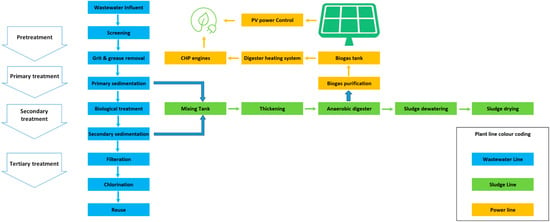
Figure 1
Open AccessArticle
Multitemporal Analysis Using Remote Sensing and GIS to Monitor Wetlands Changes and Degradation in the Central Andes of Ecuador (Period 1986–2022)
by
Juan Carlos Carrasco Baquero, Daisy Carolina Carrasco López, Jorge Daniel Córdova Lliquín, Adriana Catalina Guzmán Guaraca, David Alejandro León Gualán, Vicente Javier Parra León and Verónica Lucía Caballero Serrano
Resources 2025, 14(4), 61; https://doi.org/10.3390/resources14040061 - 4 Apr 2025
Abstract
►▼
Show Figures
Wetlands are transitional lands between terrestrial and aquatic systems that provide various ecosystem services. The objective of this study was to evaluate the change in wetlands in the Chimborazo Wildlife Reserve (CR) in the period 1986–2022 using geographic information systems (GISs), multitemporal satellite
[...] Read more.
Wetlands are transitional lands between terrestrial and aquatic systems that provide various ecosystem services. The objective of this study was to evaluate the change in wetlands in the Chimborazo Wildlife Reserve (CR) in the period 1986–2022 using geographic information systems (GISs), multitemporal satellite data, and field data from the 16 wetlands of the reserve. Images from Landsat satellite collections (five from Thematic Mapper, seven from Enhanced Thematic Mapper, and eight from Operational Land Imager and Thermal Infrared Sensor) were used. Image analysis and processing was performed, and the resulting maps were evaluated in a GIS environment to determine the land cover change and growth rate of hydrophilic opportunistic vegetation (HOV) according to hillside orientation. The results show that there are negative annual anomalies in the water-covered areas, which coincide with the increase in HOV. This shows that the constancy or increase in the rate of increase in HOV, which varies between 0.0018 and 0.0028, causes the disappearance of these ecosystems. The importance of the study lies in its potential contribution to the decision-making process in the management of the CR.
Full article
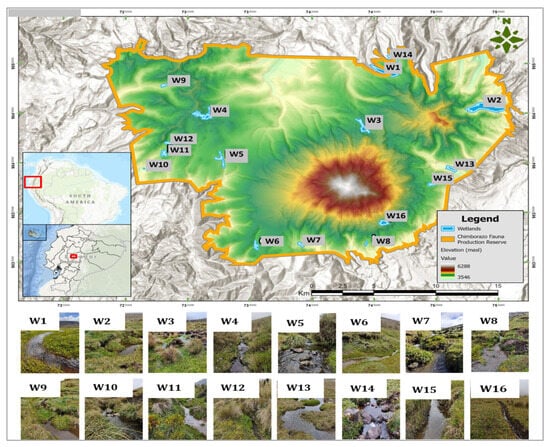
Figure 1
Open AccessArticle
A Novel Set of Analysis Tools Integrated with the Energy Gap Method for Energy Accounting Center Diagnosis in Polymer Production
by
Omar Augusto Estrada-Ramírez, Nicolás Andrés Muñoz-Realpe, Julián Alberto Patiño-Murillo and Farid Chejne
Resources 2025, 14(4), 60; https://doi.org/10.3390/resources14040060 - 2 Apr 2025
Abstract
Energy and production efficiency are critical for achieving sustainability and competitiveness in polymer processing plants. A system with high energy efficiency and performance enhances productivity while reducing greenhouse gas emissions. While Monitoring and Targeting (M&T) methodologies are widely used for energy control in
[...] Read more.
Energy and production efficiency are critical for achieving sustainability and competitiveness in polymer processing plants. A system with high energy efficiency and performance enhances productivity while reducing greenhouse gas emissions. While Monitoring and Targeting (M&T) methodologies are widely used for energy control in Energy Accounting Centers (EACs), they do not provide a diagnostic framework. The Energy Gap Method (EGM), introduced in 2018, addresses this gap by identifying the origin and magnitude of energy inefficiencies through a hierarchical model that defines six levels of specific energy consumption (SEC). Inspired by M&T strategies, the EGM has led to the development of diagnostic tools, including the Performance Characteristic Line for Diagnostics (PCLD), the Activity-Based Target from Diagnostics (ABTD), and the Performance Characteristic Curve for Diagnostics (PCCD). These tools enable manufacturers to determine optimal production batch sizes, establish minimum productivity requirements, identify molds and product references requiring intervention, and support the design of energy-efficient components. By integrating these tools, manufacturers can optimize energy consumption, achieve cost savings, and enhance environmental sustainability. This paper presents the methodology and two case studies demonstrating the analytical capabilities of the developed tools in improving energy efficiency within polymer production processes.
Full article
(This article belongs to the Special Issue Assessment and Optimization of Energy Efficiency)
►▼
Show Figures

Figure 1
Open AccessArticle
Insights into Awareness and Perceptions of Food Waste and School Catering Practices: A Student-Centered Study in Rezekne City, Latvia
by
Juta Deksne, Jelena Lonska, Sergejs Kodors, Lienite Litavniece, Anda Zvaigzne, Inese Silicka and Inta Kotane
Resources 2025, 14(4), 59; https://doi.org/10.3390/resources14040059 - 2 Apr 2025
Abstract
►▼
Show Figures
A fundamental step to foster a sustainable future is enhancing students’ awareness of responsible food consumption. The present research study assessed students’ awareness of food waste (FW) issues, attitudes towards school catering and lunch management, and the reasons for plate waste (PW) in
[...] Read more.
A fundamental step to foster a sustainable future is enhancing students’ awareness of responsible food consumption. The present research study assessed students’ awareness of food waste (FW) issues, attitudes towards school catering and lunch management, and the reasons for plate waste (PW) in Rezekne city schools, Latvia. A survey was conducted in April 2024 involving 944 students in grades 2 to 7 across four selected schools (S1, S2, S3, and S4), provided with state and municipality-funded free lunches. Statistical analysis methods (Mean ± SD, Kruskal–Wallis H test, Mann–Whitney U post hoc test, and Spearman’s correlation analysis) were used to analyze the results. The findings revealed limited awareness and knowledge of students about FW issues, and generally indifferent attitude towards FW and school meals. In addition, significant dissatisfaction with the sensory qualities of meals was observed, yet sensory satisfaction did not correlate with FW levels, pointing to broader issues within the catering model. The restrictive pre-served portion system was found ineffective in reducing FW and fostering responsible consumption. A sustainable catering model should empower students to independently choose the type and quantity of food, combining their abilities and motivation with practical actions. These findings provide a basis for strategies aimed at reducing FW and promoting responsible and sustainable food consumption in Latvian schools.
Full article

Figure 1
Open AccessArticle
Evaluation of the Migration Potential of Printed Plastic Films into the Aquatic Environment
by
Edyta Łaskawiec
Resources 2025, 14(4), 58; https://doi.org/10.3390/resources14040058 - 31 Mar 2025
Abstract
This study aimed to evaluate the degree of contamination of water matrices (deionised water, spring water, tap water) in a 14-week experiment using film samples from commercial bags printed with water- and solvent-based inks. The effect of different lighting conditions on leaching and
[...] Read more.
This study aimed to evaluate the degree of contamination of water matrices (deionised water, spring water, tap water) in a 14-week experiment using film samples from commercial bags printed with water- and solvent-based inks. The effect of different lighting conditions on leaching and ecotoxicity was also investigated. Samples were exposed for 24 h to natural sunlight and to no light in a darkroom. A significant increase in contaminants in the aqueous matrices was observed in regard to the 12-week leaching potential of the components from the films in regard to all the lighting variants and aqueous matrices analysed: an increase in dissolved organic carbon (DOC), total organic carbon (TOC), and total suspended solids (TSS). Based on the procedures carried out, the relationship between the lighting conditions and the amount of the constituents released into the aqueous matrices was not confirmed. The concentration of total organic carbon in all the samples peaked between weeks 6 and 9 of the study, followed by a gradual reduction in leaching. This phenomenon could be linked to the gradual depletion of the substances present in the samples or to the achievement of a concentration equilibrium between the aqueous matrix and the sample and/or to the formation of deposits on the surface of the films, which hindered the migration of the substances into the solutions. Ecotoxicity tests performed between 7 and 14 weeks showed most samples’ toxic and highly toxic effects on the growth of Lemna minor fronds and Sinapis alba/Lepidium sativum roots. In contrast, no toxic effects were observed in regard to most of the samples during screening mortality tests on Daphnia magna and Artemia salina. This study highlights the need for further research into the effects of plastic pollution on the aquatic environment.
Full article
(This article belongs to the Special Issue Risk Assessment of Water Resources)
►▼
Show Figures
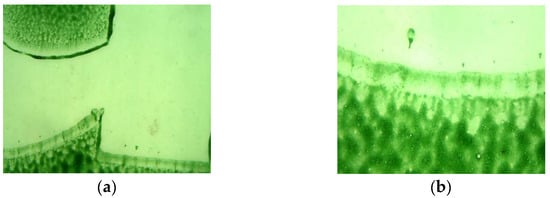
Figure 1
Open AccessArticle
The Potential Use of Solid Waste and Mine Water for Land Rehabilitation of the Coal Mine-Affected Area in Slovenia
by
Angelika Więckol-Ryk, Alicja Krzemień, Łukasz Pierzchała and Matjaž Kamenik
Resources 2025, 14(4), 57; https://doi.org/10.3390/resources14040057 - 31 Mar 2025
Abstract
The rehabilitation of post-mining sites is crucial due to the severe environmental impacts of mining, including land degradation, heavy metal pollution, and loss of biodiversity. Effective reclamation strategies are essential to reverse these impacts and enable sustainable land use. This study presents the
[...] Read more.
The rehabilitation of post-mining sites is crucial due to the severe environmental impacts of mining, including land degradation, heavy metal pollution, and loss of biodiversity. Effective reclamation strategies are essential to reverse these impacts and enable sustainable land use. This study presents the possibility of the rehabilitation of a post-mining area in Velenje, Slovenia, using artificial soils made from combustion by-products amended with lignite and organic compost, and explores the potential of lignite mine water for irrigation. This approach introduces an innovative solution that differs from the traditional methods of rehabilitating degraded areas. Physicochemical and phytotoxicity tests were conducted to determine the quality of the soil substitutes. The analysis revealed that the pH, salinity, and chemical composition of soils positively impacted Sinapis alba growth as a test plant, with the most promising compositions containing 20–30% of lignite by weight as a replacement for organic compost. Irrigation water quality parameters, such as electrical conductivity (0.87 dS/m), the sodium absorption ratio (2.09 meq/L), and boron content (0.05 mg/L), indicated a low soil dispersion risk, while the residual sodium carbonate (3.02 meq/L) suggested a medium risk. Although, the concentration of toxic elements did not exceed the threshold limits; the long-term irrigation with mine water requires the monitoring of the molybdenum levels. These results suggest the potential for using artificial soils and mine water in post-mining land reclamation but highlight the need for the monitoring of their quality.
Full article
(This article belongs to the Special Issue Mine Ecological Restoration)
►▼
Show Figures

Figure 1
Open AccessArticle
Struvite Precipitation from Centrate—Identifying the Best Balance Between Effectiveness and Resource Efficiency
by
Andreas Kolb, Tim Gebhardt and Thomas Dockhorn
Resources 2025, 14(4), 56; https://doi.org/10.3390/resources14040056 - 28 Mar 2025
Abstract
►▼
Show Figures
In the context of struvite precipitation, the most significant gap pertains to the transfer of knowledge from scientific research to practical applications. The primary objective of this study is twofold: firstly, to identify the most critical process parameters influencing struvite precipitation and, secondly,
[...] Read more.
In the context of struvite precipitation, the most significant gap pertains to the transfer of knowledge from scientific research to practical applications. The primary objective of this study is twofold: firstly, to identify the most critical process parameters influencing struvite precipitation and, secondly, to translate these parameters into a pragmatic tool for real-world applications. This study investigates the precipitation of struvite from digestion centrate to obtain information on the appropriate precipitation conditions for different initial chemical compositions. We carried out 24 lab-scale experiments to investigate the effect of varying pH value (7.0–8.5), temperature (5 °C and 33 °C) and initial phosphate concentrations (353; 165; 68 mg/L) on struvite precipitation. Varying the pH had the strongest influence on precipitation efficiencies. Adjusting pH from 7 to 8.5 increased PO4-P removal from 1.4% to 98.8%, whereas temperature had little impact on PO4-P removal. Furthermore, we found that a saturation index of at least 1.7 is imperative to precipitate at least 90% of the available PO4-P. Based on the results, we developed a nomogram showing the resulting saturation index and the associated PO4-P removal efficiency for variable initial PO4-P and pH levels. The tool developed in this study enables users to directly identify the so-called ‘sweet spot’, which is the optimal balance between process effectiveness and resource efficiency, for each centrate.
Full article

Figure 1
Open AccessArticle
Comparison of Growth, Yield, and Carbon Dioxide Emission After Cultivation of Five Edible Mushrooms
by
Preuk Chutimanukul, Pawarisa Phetkaew, Siripong Sukdee, Ornprapa Thepsilvisut and Hiroshi Ehara
Resources 2025, 14(4), 55; https://doi.org/10.3390/resources14040055 - 27 Mar 2025
Abstract
The increasing problem of carbon dioxide emissions has become a significant concern, with mushroom production identified as one of the contributing factors. This is because the mushroom production process emits carbon dioxide through respiration, and the carbon dioxide emitted by the mushrooms contributes
[...] Read more.
The increasing problem of carbon dioxide emissions has become a significant concern, with mushroom production identified as one of the contributing factors. This is because the mushroom production process emits carbon dioxide through respiration, and the carbon dioxide emitted by the mushrooms contributes to an increase in greenhouse gases. The carbon dioxide emitted by mushrooms can be utilized in various applications, such as supporting vegetable cultivation in greenhouses. However, the amount of carbon dioxide emitted by mushrooms varies. Thus, this study aimed to investigate the growth, yield, and carbon dioxide emissions in five edible mushrooms, namely Pleurotus pulmonarius, Lentinus squarrosulus, P. ostreatus, P. citrinopileatus, and P. cystidiosus. The experiment found that the fresh weight, dry weight, and biological efficiency percentage of P. ostreatus were the highest at 65.71, 11.18 g, and 28.22 percent, respectively. In contrast, the fresh weight, dry weight, and biological efficiency percentage of L. squarrosulus were the lowest, at 24.90, 3.80 g, and 9.90 percent, respectively. On the other hand, the carbon dioxide emitted from L. squarrosulus was the highest, ranging from 854.00 to 8369.67 ppm, while the carbon dioxide emitted from P. cystidiosus was the lowest, ranging from 606.00 to 861.00 ppm.
Full article
(This article belongs to the Topic Zero Hunger: Health, Production, Economics and Sustainability)
►▼
Show Figures
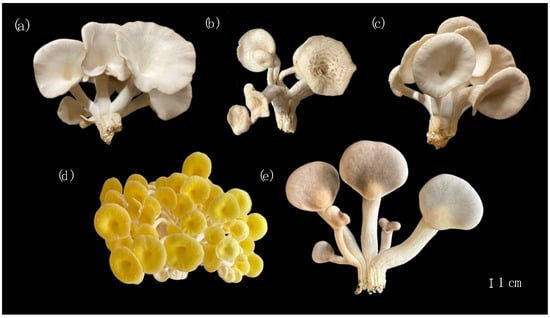
Figure 1
Open AccessArticle
Crude Oil Resources Under Climate Stringent Scenarios: Production Under Contract and Probabilistic Analyses of Exploratory Frontiers
by
Silvia Pantoja, Pedro R. R. Rochedo and Alexandre Szklo
Resources 2025, 14(4), 54; https://doi.org/10.3390/resources14040054 - 26 Mar 2025
Abstract
►▼
Show Figures
This study analyzes the crude oil supply in 2030 and 2050, comparing it with demand scenarios from the UN Intergovernmental Panel on Climate Change and the International Energy Agency. It focuses on the oil under production or development as of today (or the
[...] Read more.
This study analyzes the crude oil supply in 2030 and 2050, comparing it with demand scenarios from the UN Intergovernmental Panel on Climate Change and the International Energy Agency. It focuses on the oil under production or development as of today (or the supply already under contract), and the oil frontiers. For that, it firstly evaluates a database of over 107,000 assets to identify and classify recoverable oil volumes through 2050. By comparing the supply and demand, this study identifies scenarios requiring production declines or, in opposition, the development of new projects and exploratory frontiers. The focus is on 2030 and 2050, which are key milestones in the global climate agenda. As an original contribution, the analysis also identifies how oil supply regions position themselves regarding oil quality, production costs, and the GHG emission intensity of the oil offered. As the second contribution, this study develops the probability assessment of recoverable resources to evaluate a typical oil frontier, analyzing how global climate scenarios could affect the probability of approving a deepwater offshore project. The findings show that cumulative oil consumption by 2050 may range from 600 billion to 1 trillion barrels, with marginal supply costs between US$28/bbl and US$44/bbl. The findings indicate that the frontier project lacks economic attractiveness in scenarios limiting the increase in the global surface temperature (GST) below 1.5 °C with no or limited overshoots. However, assuming a smooth price decline trajectory from today to 2050, the project exhibits high profitability and returns across all the scenarios. This suggests that the industry might remain inclined to approve new projects, even amid potential energy transition scenarios, driven by favorable short- and medium-term returns despite long-term uncertainties.
Full article
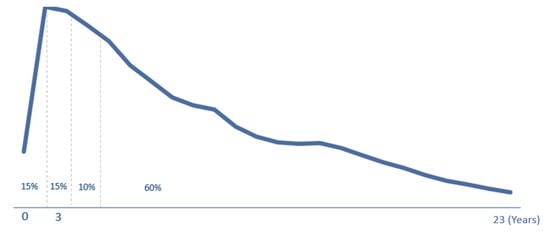
Figure 1
Open AccessArticle
Development of a Quantitative Assessment Algorithm for Operational Risks in Mining Engineering
by
Marina Nevskaya, Anna Shabalova, Liubov Nikolaichuk and Natalya Kirsanova
Resources 2025, 14(4), 53; https://doi.org/10.3390/resources14040053 - 25 Mar 2025
Abstract
►▼
Show Figures
Whenever any type of ore deposit is developed, it comes with significant risks, such as uncertain reserves, harsh climate conditions, and other uncontrollable factors. To manage these risks effectively, companies need to quickly adapt to changing conditions. This paper presents a method for
[...] Read more.
Whenever any type of ore deposit is developed, it comes with significant risks, such as uncertain reserves, harsh climate conditions, and other uncontrollable factors. To manage these risks effectively, companies need to quickly adapt to changing conditions. This paper presents a method for evaluating risks using a simulation model. The main objective is to identify factors of operational risk and determine the project parameters that have the greatest impact on the probability of a risk event. The method includes the classification of operational risks based on the way they arise; the creation of a risk decomposition matrix dividing risks by production tasks; and the construction of a mathematical model using the identified risk factors. The method was tested by developing a simulation model of an underground mine conveyor network in Anylogic (8.9.2) software. A simulation experiment showed that conveyor shutdowns could result in an 11.23% reduction in annual revenue. Based on the results, recommendations were made on how these risks can be reduced and on the need to implement a transport system to increase resilience.
Full article

Figure 1
Open AccessArticle
Assessing Lead Waste and Secondary Resources in Major Consumer Nations: A Vanishing Resource or a Toxic Legacy?
by
Sebastien M. R. Dente, Jian Zhang and Seiji Hashimoto
Resources 2025, 14(4), 52; https://doi.org/10.3390/resources14040052 - 24 Mar 2025
Abstract
►▼
Show Figures
This study applies a dynamic material flow analysis to track lead flows, in-use stocks, secondary reserves, and recycling trends across eleven major economies from 1950 to 2018. The results show the global lead cycle has shifted from a variety of industrial applications to
[...] Read more.
This study applies a dynamic material flow analysis to track lead flows, in-use stocks, secondary reserves, and recycling trends across eleven major economies from 1950 to 2018. The results show the global lead cycle has shifted from a variety of industrial applications to a predominant reliance on lead–acid batteries. By 2018, China had become the dominant actor, accounting for 82% of global lead extraction and holding 47% of total in-use stocks (58.3 Mt). Despite regulatory efforts to phase out dissipative uses, the global domestic processed output in 2018 reached 1429 kt, surpassing 1976 levels (1148 kt). At the same time, end-of-life lead waste increased to 7717 kt, yet only 48% was successfully recovered, exposing inefficiencies in current recycling and circular economy initiatives. Secondary reserves also varied widely, with China (18.5 Mt) and the US (9.9 Mt) leading in absolute terms, while Europe maintained the highest per capita reserves. The growing competition from lithium-ion batteries raises questions about the long-term role of lead in industry. If demand declines, the accumulation of unmanaged legacy stocks could become a significant environmental challenge. To address these issues, improvements in recycling systems, stricter waste management policies, and the development of sustainable alternatives are needed.
Full article
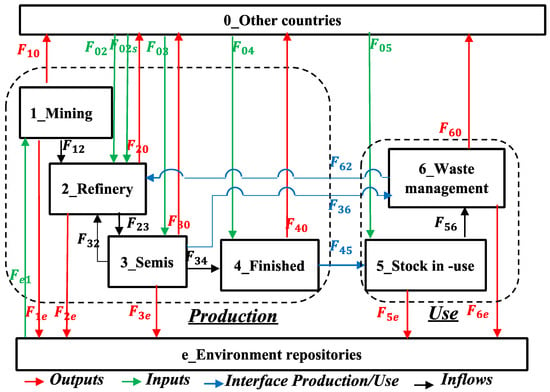
Figure 1
Open AccessArticle
Model for Assessing Efficiency of Processing Geo-Resources, Providing Full Cycle for Development—Case Study in Russia
by
Cheynesh Kongar-Syuryun, Nikita Babyr, Roman Klyuev, Marat Khayrutdinov, Vladislav Zaalishvili and Valery Agafonov
Resources 2025, 14(3), 51; https://doi.org/10.3390/resources14030051 - 18 Mar 2025
Abstract
►▼
Show Figures
The environmental impact and occurrence of frequent ecological disasters have prompted a reassessment of societal values in the modern era. There has been a shift in the economic model, moving away from the pursuit of extensive growth towards a sustainable development model that
[...] Read more.
The environmental impact and occurrence of frequent ecological disasters have prompted a reassessment of societal values in the modern era. There has been a shift in the economic model, moving away from the pursuit of extensive growth towards a sustainable development model that prioritizes the preservation of the natural balance. This issue is of particular relevance in regions where mining activities are prevalent. In such regions, mining enterprises exert a considerable burden on the ecosystem, acting as significant sources of industrial waste. In light of the aforementioned considerations, the objective of this study is to develop a model for assessing the efficiency of industrial geo-resource recycling, taking into account both environmental and economic factors. The methodology is founded upon the principles of the efficient and comprehensive exploitation of natural and industrial geo-resources, in alignment with the tenets of sustainable development and the theoretical tenets of a cyclic economy. The methodology for assessing the efficiency of geo-resource recycling is based on the following three principal analytical approaches: economic and statistical, structural and logical, and comparative. The article examines the genesis of industrial waste, delineates the divergent patterns of the accumulation and utilization of mining waste, and classifies categories of industrial waste. The principal stages of the feasibility study are delineated, an algorithm is devised, and a model for evaluating the efficacy of industrial raw material recycling is proposed. The enumerated factors facilitate the recommendation of the model in the selection of the most optimal investment project in industrial geo-resource recycling.
Full article
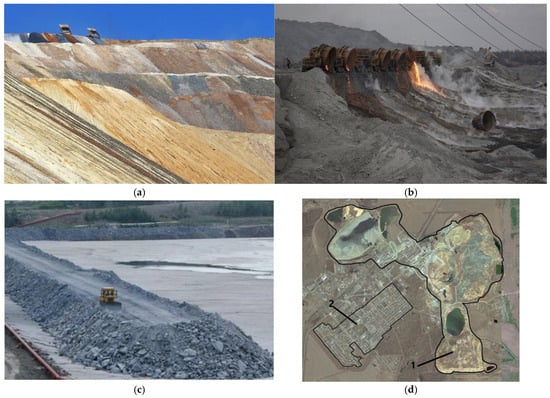
Figure 1
Open AccessArticle
The Contribution of Arbuscular Mycorrhizal Fungi to Soil Enzyme Activity and the Performance of Mimosa caesalpiniaefolia in Soil Degraded by Scheelite Mining: Implications for Restoration
by
Kaio Gráculo Vieira Garcia, Murilo de Sousa Almeida, Francisco Luan Almeida Barbosa and Arthur Prudêncio de Araujo Pereira
Resources 2025, 14(3), 50; https://doi.org/10.3390/resources14030050 - 18 Mar 2025
Abstract
►▼
Show Figures
Mining activity severely degrades soil, increases heavy metal contamination, and hinders ecological recovery. Arbuscular mycorrhizal fungi (AMF) offer a promising strategy for restoration, but their use in Fabaceae plants, especially in mine-degraded soils, remains underexplored. This study evaluated AMF inoculation effects on soil
[...] Read more.
Mining activity severely degrades soil, increases heavy metal contamination, and hinders ecological recovery. Arbuscular mycorrhizal fungi (AMF) offer a promising strategy for restoration, but their use in Fabaceae plants, especially in mine-degraded soils, remains underexplored. This study evaluated AMF inoculation effects on soil enzymes and Mimosa caesalpiniaefolia growth in Scheelite-mining-degraded soil. In a 10-weeks greenhouse experiment, plants were grown with different AMF species (Gigaspora margarita, Acaulospora foveata, Rhizoglomus clarum, and Mix—a combination of the three species) and without inoculation. Growth parameters, seedling quality, mycorrhizal attributes, enzymatic activity, and stoichiometry were assessed. Inoculated plants showed a greater growth compared with the control. The highest spore abundances occurred in Mix (2820), R. clarum (2261), and A. foveata (2318), with the mycorrhizal colonization highest in Mix (25.78%) and R. clarum (25.70%). The Dickson quality index was higher in R. clarum and A. foveata. The enzymatic activity varied compared with the control: β-glucosidase was higher in Mix (+62%) and A. foveata (+46%); arylsulfatase and urease increased in all AMF treatments; and acid phosphatase was highest in R. clarum (+121%). A stoichiometry and vector analysis indicated a lower P limitation in Mix and A. foveata, reflecting the trade-off between P availability and symbiotic costs. These findings highlight the biotechnological potential of AMF, particularly Mix and R. clarum, in enhancing the M. caesalpiniaefolia growth and soil enzymatic activity in mining-degraded areas.
Full article
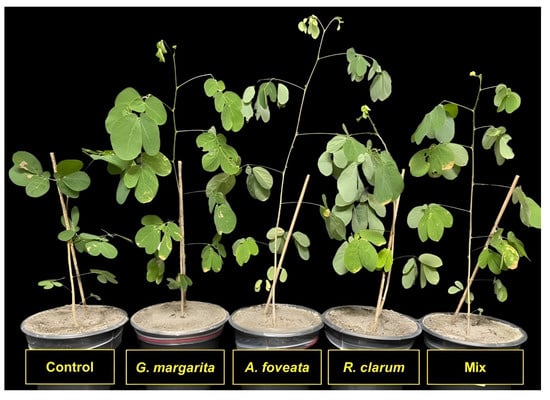
Figure 1
Open AccessArticle
Assessment of Hydropower Potential in the Upper Indus Basin: A Geographic Information System-Based Multi-Criteria Decision Analysis for Sustainable Water Resources in Pakistan
by
Asim Qayyum Butt, Donghui Shangguan, Muhammad Waseem, Adnan Abbas, Abhishek Banerjee and Nilesh Yadav
Resources 2025, 14(3), 49; https://doi.org/10.3390/resources14030049 - 17 Mar 2025
Abstract
►▼
Show Figures
The development of hydropower projects is crucial to addressing Pakistan’s ongoing energy and financial crises. Despite the country’s abundant hydropower resources, particularly in the northern regions, these have not been adequately explored, while energy consumption and supply issues have persisted for the past
[...] Read more.
The development of hydropower projects is crucial to addressing Pakistan’s ongoing energy and financial crises. Despite the country’s abundant hydropower resources, particularly in the northern regions, these have not been adequately explored, while energy consumption and supply issues have persisted for the past two decades. Focusing on Sustainable Development Goal (SDG-7): “Ensure access to affordable, reliable, sustainable, and modern energy”, this study aimed to assess the hydropower potential at suitable sites in the Upper Indus Basin (Pakistan) by integrating Geographic Information Systems (GIS) and Multi-Criteria Decision Analysis (MCDM). This study not only focused on estimating hydropower but also considered the environmental constraints at all sites by using the multi-criteria decision-making (MCDM) tool, which used the location and constraint criteria, along with benefit and cost criteria. The methodology combines technical evaluations (head and discharge) with environmental constraints to prioritize sustainable hydropower development. Key findings identify sites 17, 15, 16, 5, and 6 as the most promising locations, balancing energy generation with minimal environmental impact. This study provides a replicable framework for policymakers to harness hydropower resources responsibly, contributing to Pakistan’s energy security and aligning with global Sustainable Development Goals. This approach not only bridges the gap between technical feasibility and environmental sustainability but also offers a model for other regions facing similar energy challenges.
Full article
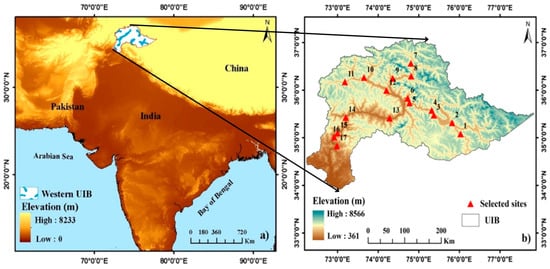
Figure 1
Open AccessArticle
Coffee By-Products and Chitosan for Preventing Contamination for Botrytis sp. and Rhizopus sp. in Blueberry Commercialization
by
Gonzalo Hernández-López and Laura Leticia Barrera-Necha
Resources 2025, 14(3), 48; https://doi.org/10.3390/resources14030048 - 17 Mar 2025
Abstract
In blueberry storage, non-biodegradable synthetic plastic packaging is used for commercializing this product. The fungi Botrytis sp. and Rhizopus sp. can cause significant losses in postharvest blueberry commercialization. Consequently, the formulations of degradable polymeric based on polylactic acid (PLA)/poly(butylene adipate-co-terephthalate) (PBAT) 60/40 (PP)
[...] Read more.
In blueberry storage, non-biodegradable synthetic plastic packaging is used for commercializing this product. The fungi Botrytis sp. and Rhizopus sp. can cause significant losses in postharvest blueberry commercialization. Consequently, the formulations of degradable polymeric based on polylactic acid (PLA)/poly(butylene adipate-co-terephthalate) (PBAT) 60/40 (PP) with coffee parchment (CP), green coffee bean oil (GCBO), chitosan solution (Ch), chitosan nanoparticles (ChNp), and nanostructured coating (NC) were used to develop biodegradable polymer matrix (PM). Caffeine and hexadecanoic acid were identified as principal compounds in GCBO, and the principal compounds in CP were flavonoids, terpenes, and lignans. The 100% mycelial growth inhibition to Botrytis sp. and Rhizopus sp. was observed using GCBO, Ch, ChNp, and NC in high concentrations. GCBO inhibited 100% of spore production in both fungi at all evaluated doses. In the in vivo tests, when compared to the control, the better treatments were: CP for Botrytis sp., with an incidence of 46.6% and a severity of 16%; and Ch for Rhizopus sp., with an incidence of 13.3% and a severity of 0.86%. The PM in the culture medium presented a fungistatic effect. The principal inhibition of mycelial growth (63%) on Botrytis sp. was with PLA/PBAT+NC (PP+NC), and (100%) was observed with PLA/PBAT+CP+NC (PPCP+NC), PP, and PP+NC on Rhizopus sp. Coffee by-products and PM have potential for the control of postharvest fungi in fruits and vegetables.
Full article
(This article belongs to the Special Issue Resource Extraction from Agricultural Products/Waste: 2nd Edition)
►▼
Show Figures
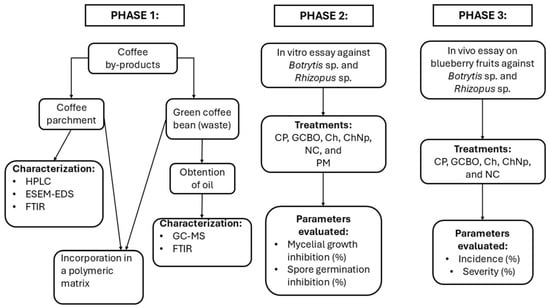
Figure 1
Open AccessReview
Energy Recovery from Organic Wastes Using Microbial Fuel Cells: Traditional and Nonconventional Organic Substrates
by
Wilgince Apollon, Iryna Rusyn, Noris Evelin Paucar, Monte Hibbert, Sathish-Kumar Kamaraj and Chikashi Sato
Resources 2025, 14(3), 47; https://doi.org/10.3390/resources14030047 - 13 Mar 2025
Abstract
►▼
Show Figures
Microbial fuel cells (MFCs) are environmentally friendly energy converters that use electrochemically active bacteria (EAB) as catalysts to break down organic matter while producing bioelectricity. Traditionally, MFC research has relied on simple organic substrates, such as acetate, glucose, sucrose, butyrate, and glutamate, the
[...] Read more.
Microbial fuel cells (MFCs) are environmentally friendly energy converters that use electrochemically active bacteria (EAB) as catalysts to break down organic matter while producing bioelectricity. Traditionally, MFC research has relied on simple organic substrates, such as acetate, glucose, sucrose, butyrate, and glutamate, the production of which involves energy-intensive, CO2-dependent processes and chemically aggressive methods. In contrast, nonconventional waste streams offer a more sustainable alternative as feedstocks, aligning with zero-waste and regenerative agricultural principles. This review highlights the potential of nonconventional organic wastes, such as fruit and vegetable wastes, raw human and livestock urine, and farm manure, as globally available and low-cost substrates for MFCs, particularly in household and farming applications at small-scale waste levels. Furthermore, complex waste sources, including hydrocarbon-contaminated effluents and lignin-rich industrial wood waste, which present unique challenges and opportunities for their integration into MFC systems, were examined in depth. The findings of this review reveal that MFCs utilizing nonconventional substrates can achieve power outputs comparable to traditional substrates (e.g., 8314 mW m−2–25,195 mW m−2 for crude sugarcane effluent and raw distillery effluent, respectively) and even superior to them, reaching up to 88,990 mW m−2 in MFCs utilizing vegetable waste. Additionally, MFCs utilizing hydrocarbon-containing petroleum sediment achieved one of the highest reported maximum power densities of 50,570 mW m−2. By integrating diverse organic waste streams, MFCs can contribute to carbon-neutral energy generation and sustainable waste management practices.
Full article
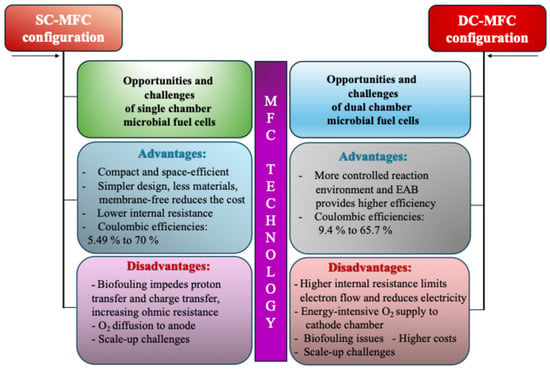
Figure 1
Open AccessArticle
Evaluating Alternative Oxidants for Artificial Chemical Oxygen Demand Removal Performance from Wastewater Treatment Plants
by
Julio Alejandro Gutiérrez González, Angel Fernández Mohedano and Francisco Raposo Bejines
Resources 2025, 14(3), 46; https://doi.org/10.3390/resources14030046 - 10 Mar 2025
Abstract
►▼
Show Figures
The accurate characterization of pollution in terms of chemical oxygen demand (COD) in wastewater treatment plants is considered as a key topic for their monitoring. In this research work, the negative interference of oxychlorides in COD measurements has been evaluated at a laboratory
[...] Read more.
The accurate characterization of pollution in terms of chemical oxygen demand (COD) in wastewater treatment plants is considered as a key topic for their monitoring. In this research work, the negative interference of oxychlorides in COD measurements has been evaluated at a laboratory scale. Specifically, the role of oxychlorides as alternative oxidizing agents in competition with dichromate has been assessed. The extent of COD reduction performance varied widely (40–100%) according to the particular oxychloride oxidizing reagent used and its concentration, as well as the organic carbon source and amount present in the wastewater. The experimental values of COD removal performance should be considered as dual concentration dependent. On the one hand, for each oxidizing agent, the COD reduction performance is directly proportional to the dosage used in the experiment. On the other hand, the influence of organic matter concentration on COD removal performance was inversely proportional. In addition, chlorate can be considered the strongest oxidizing agent and the principal interferent responsible for the overevaluation of COD removal performance. Furthermore, the interference extent of oxychlorides on COD determination decreased in the order of phthalate > hydrocarbons > proteins. These results can be useful to appropriately evaluate the performance of wastewater treatment plants.
Full article

Figure 1
Open AccessArticle
Exploring the Interplay Between Food Provision and Habitat Quality Assessment for Sustainable Coexistence in the Bioproduction Systems of the Philippines
by
Mesfin Sahle, Nico R. Almarines, Shruti Ashish Lahoti, Cristino L. Tiburan, Jr., Juan M. Pulhin and Osamu Saito
Resources 2025, 14(3), 45; https://doi.org/10.3390/resources14030045 - 7 Mar 2025
Abstract
►▼
Show Figures
Balancing human activities and ecosystem health is critical amid increasing biodiversity concerns. This study explores the relationship between food provision and habitat quality in bioproduction systems in the Philippines, focusing on the Pagsanjan-Lumban Watershed (PLW) and the Baroro Watershed (BW). Using the TerrSet
[...] Read more.
Balancing human activities and ecosystem health is critical amid increasing biodiversity concerns. This study explores the relationship between food provision and habitat quality in bioproduction systems in the Philippines, focusing on the Pagsanjan-Lumban Watershed (PLW) and the Baroro Watershed (BW). Using the TerrSet Land Change Modeler for LULC projections, the InVEST model for habitat quality assessment, and statistical analysis of disaggregated crop production data, this study evaluates the synergies and trade-offs between food provision and biodiversity conservation. The findings reveal that LULC changes—such as shifts in annual crops, built-up areas, forests, and agroforestry systems—impact ecosystem health. Habitat quality in the PLW shows temporal degradation, while the BW remains relatively stable. Food production trends indicate fluctuating yields in the PLW, with a decline in the BW. Correlation analysis highlights trade-offs between food provision and habitat quality in the PLW, whereas the BW exhibits a positive correlation, suggesting potential synergies. These findings emphasize the importance of place-based strategies to reconcile food production and biodiversity conservation, ensuring sustainable bioproduction systems that support both ecosystem health and food security.
Full article

Figure 1

Journal Menu
► ▼ Journal Menu-
- Resources Home
- Aims & Scope
- Editorial Board
- Reviewer Board
- Topical Advisory Panel
- Instructions for Authors
- Special Issues
- Topics
- Topical Collections
- Article Processing Charge
- Indexing & Archiving
- Editor’s Choice Articles
- Most Cited & Viewed
- Journal Statistics
- Journal History
- Journal Awards
- Editorial Office
Journal Browser
► ▼ Journal BrowserHighly Accessed Articles
Latest Books
E-Mail Alert
News
2 April 2025
MDPI INSIGHTS: The CEO's Letter #21 - Annual Report, Swiss Consortium, IWD, ICARS, Serbia
MDPI INSIGHTS: The CEO's Letter #21 - Annual Report, Swiss Consortium, IWD, ICARS, Serbia
28 March 2025
International Day of Zero Waste—“Towards Zero Waste in Fashion and Textiles”, 30 March 2025
International Day of Zero Waste—“Towards Zero Waste in Fashion and Textiles”, 30 March 2025

Topics
Topic in
Energies, Geosciences, Minerals, Resources
Drilling, Completion and Well Engineering for the Natural Energy Resources Extraction, Storage and Sustainable Management, 2nd Edition
Topic Editors: Mofazzal Hossain, Hisham Khaled Ben Mahmud, Md Motiur RahmanDeadline: 20 May 2025
Topic in
Diversity, Geosciences, Land, Resources, Sustainability
Advances in Geodiversity Research
Topic Editors: Paulo Pereira, Murray Gray, Maria da Glória GarciaDeadline: 20 June 2025
Topic in
Buildings, Energies, Entropy, Resources, Sustainability, Processes
Advances in Solar Heating and Cooling
Topic Editors: Salvatore Vasta, Sotirios Karellas, Marina Bonomolo, Alessio Sapienza, Uli JakobDeadline: 30 June 2025
Topic in
Electricity, Electronics, Energies, Processes, Resources, WEVJ, JMSE
Advanced Operation, Control, and Planning of Intelligent Energy Systems
Topic Editors: Ziming Yan, Rui Wang, Chuan He, Tao Chen, Zhengmao LiDeadline: 31 July 2025

Conferences
Special Issues
Special Issue in
Resources
Thermochemical Conversion of Bioresources: Pathways to Circular Economy
Guest Editors: Balal Yousaf, Krzysztof PikońDeadline: 20 April 2025
Special Issue in
Resources
Geosites as Tools for the Promotion and Conservation of Geoheritage
Guest Editor: Federico Pasquarè MariottoDeadline: 20 April 2025
Special Issue in
Resources
Natural and Anthropogenic Conditions of Changes in the Hydrosphere
Guest Editors: Mariusz Ptak, Mariusz SojkaDeadline: 20 May 2025
Special Issue in
Resources
Mine Ecological Restoration
Guest Editor: Rongkui SuDeadline: 20 May 2025
Topical Collections
Topical Collection in
Resources
Management, Environment, Energy and Sustainability under a Circular Economy
Collection Editors: Elena Magaril, Elena Rada





